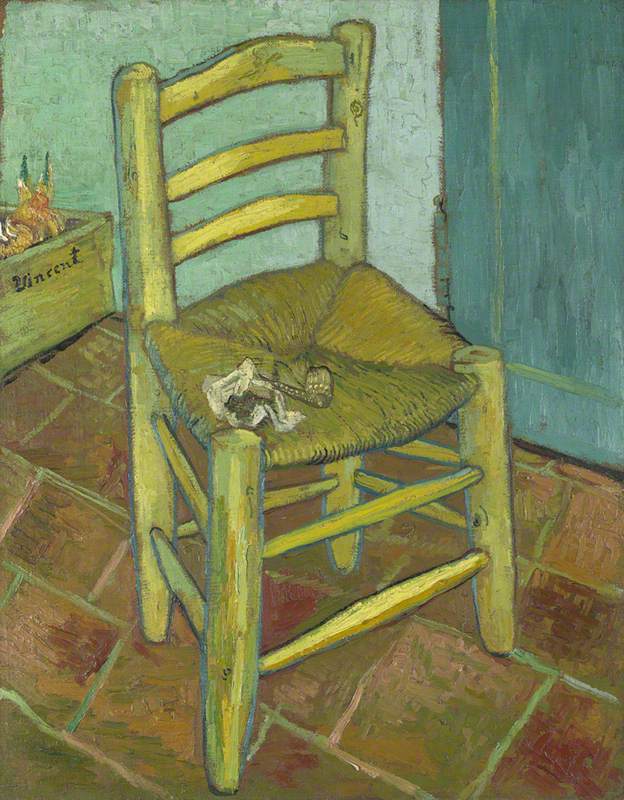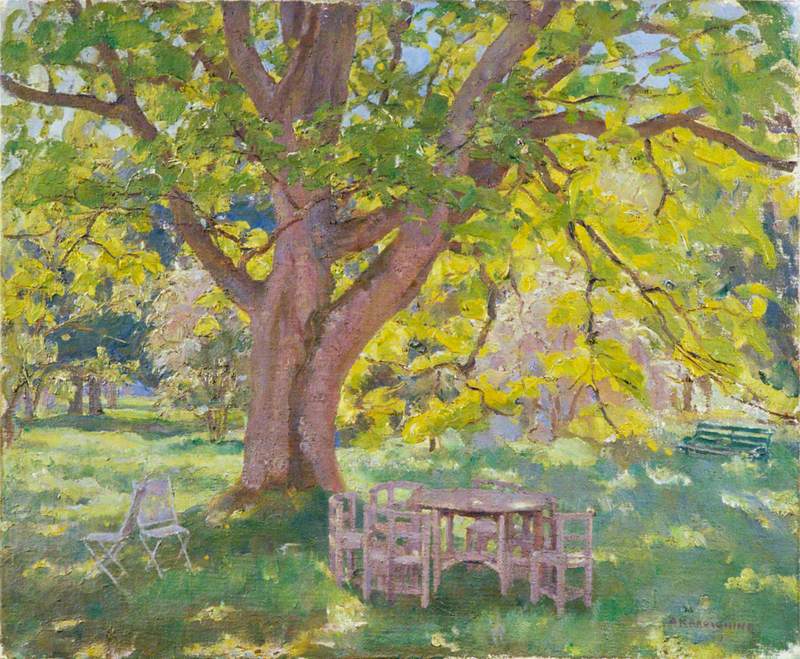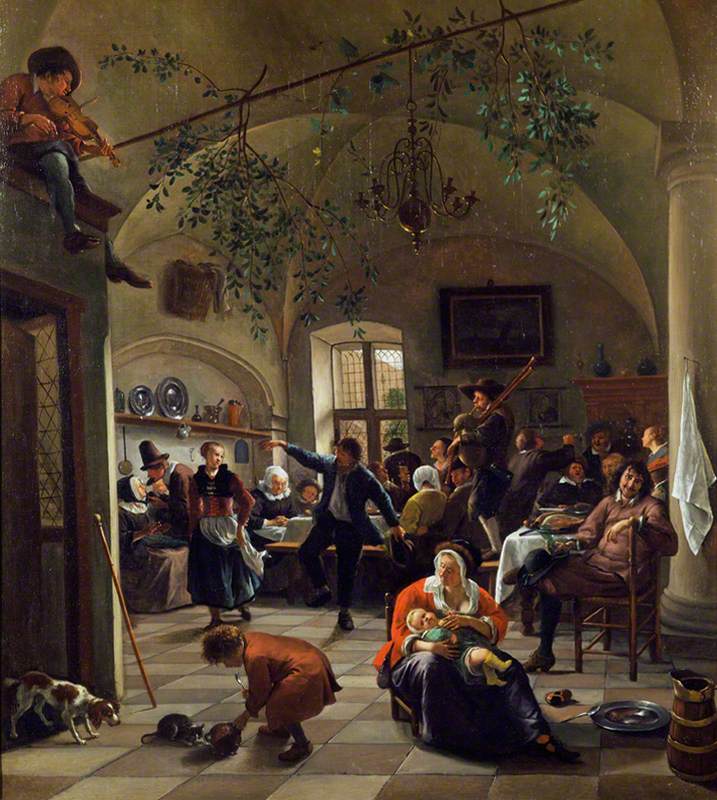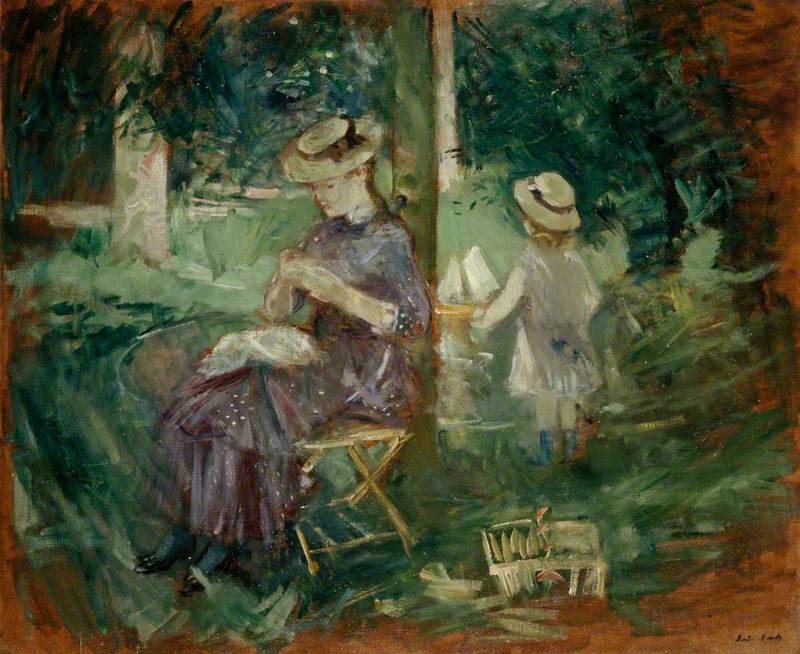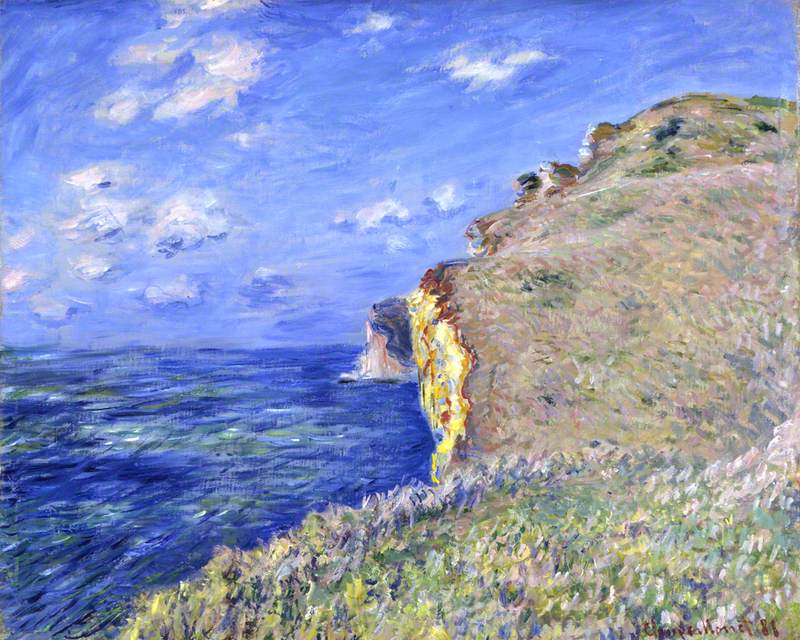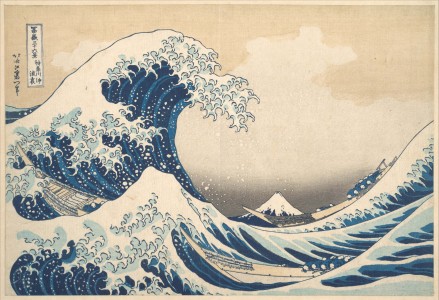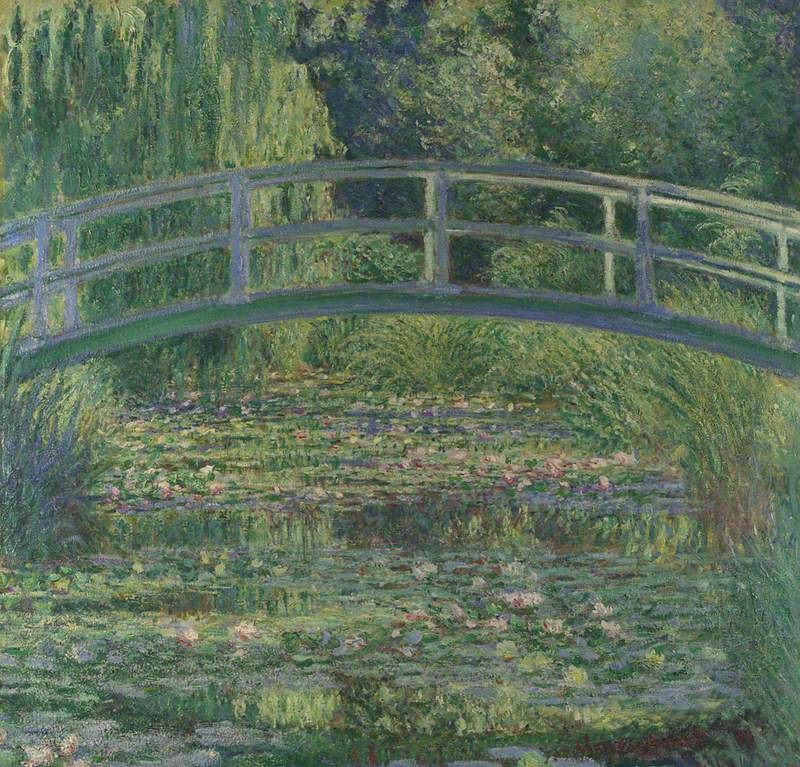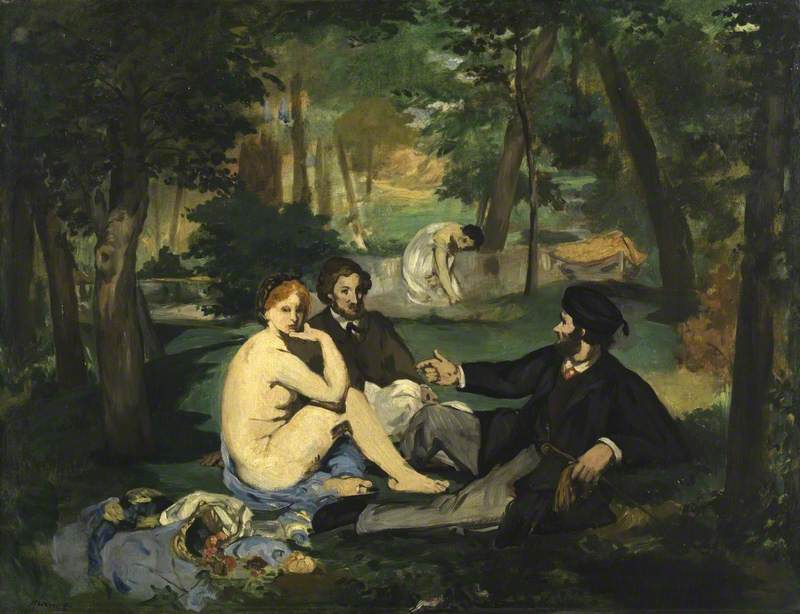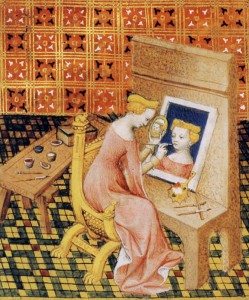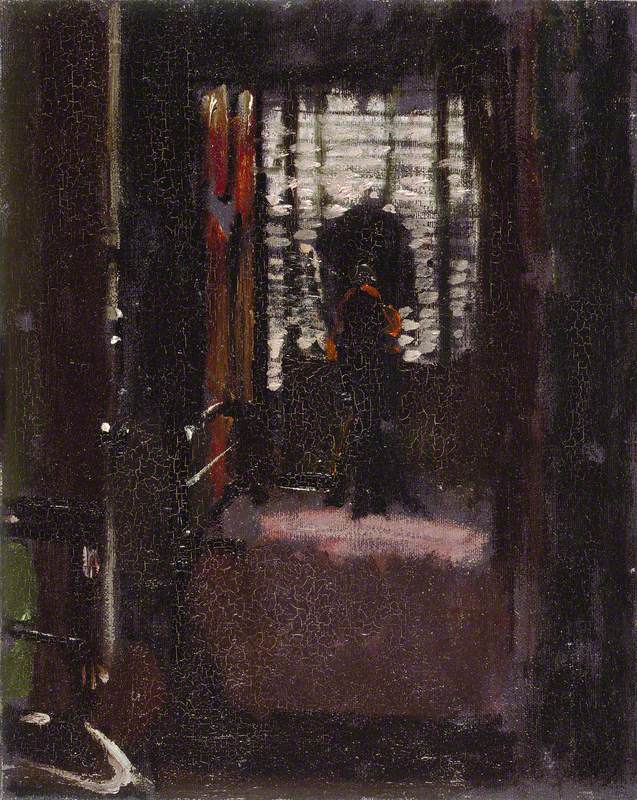A Bar at the Folies-Bergère (1882) by the French artist Édouard Manet (1832–1883) is part of the permanent collection of The Courtauld Gallery. Manet's painting large size – 96cm x 130cm – immediately catches the attention of the spectator, making it an ineludible artwork in the gallery.
A Bar at the Folies-Bergère
1882
Édouard Manet (1832–1883) 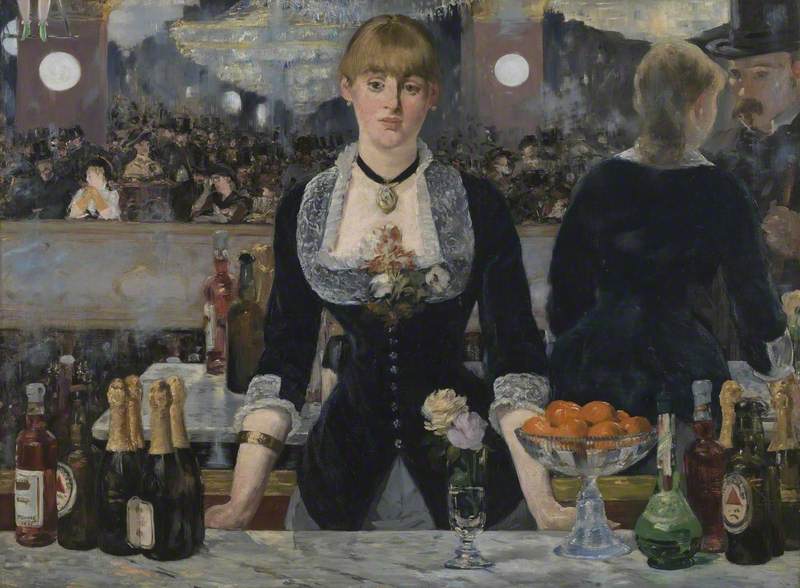
Surrounded by masterpieces of French Impressionism, A Bar at the Folies-Bergère gives the spectator an insight into Parisian modern life at the end of the nineteenth century. Although Manet didn't exhibit with the Impressionists, his bold and fresh work has come to be associated with the development of the style.
Impressionist painters were heavily influenced by modern life and the dramatic changes that were being introduced in society. Among them, a dynamic and accelerated way of life brought upon by technological inventions such as the train, factories, the rise of modern cities and a busy and buzzing society.
Impressionist paintings' topics and techniques reflect the new challenges that modern society presented to its contemporaries; rapid brushstrokes allowed artists to capture impressions, such as the refection of light in water, the smoke of the chimney of a passing train or the buzz of a busy boulevard. The impressions portrayed on canvas coincided with the sensation of vertiginous living of a modern life. Impressionist artists detached themselves from the studio in favour of the open air. As a result, they tended to work on smaller canvases as they needed to work fast – speed, again, was another symbol of modern times.
Among the topics that were more appealing to this group of artists were scenes and people of modern everyday life: workers and prostitutes, Parisian cafés, anonymous passers-by, trains and boats, water, landscapes, theatre life, recreational activities during the weekends. It is worth mentioning that these topics were not well received by academics and critics of the time as they diverted from traditional topics: history painting, portraiture (of important people), genre painting, landscapes and still life.
A Bar at the Folies-Bergère shows – on large scale and in the centre of the canvas – a young barmaid leaning on a marble countertop. On the counter there are bottles of champagne (on the left), a vase with flowers, a bowl with clementines and bottles of beer (on the right). Behind her, there is a large mirror.
The mirror's golden frame can be seen behind the barmaid's right arm, but the mirror's reflection creates doubt and ambiguity to the viewer. At first glance, it reflects the auditorium of the Folies-Bergère – Paris' first music hall – the audience, a performer's legs standing on a trapeze in the top left corner, and a man interacting with the barmaid in the right top corner.
Manet's painting focuses the attention on an unknown barmaid – possibly a prostitute, as it was not rare for female barmaids to offer sexual services – and places her in a central position in the canvas. This composition must have been quite confusing to a contemporary spectator, used to admiring portraits of important people. Furthermore, the barmaid – behind the bar counter – looks straight at us, the spectator, forcing us to look straight back at her, as if we were to be the next client.
However, a more careful look to the background reveals that the spectator is not the client. The mirror behind the barmaid reflects her interacting with a male figure – possibly Manet's self portrait. It is possible that Manet, who was quite ill with a syphilis infection at the moment of creating this painting, intended to summarise the experience of his life in Paris, as music halls, cafés, and prostitutes were part of his normal life.
Another interesting aspect of the barmaid is her facial expression, which still generates doubt and debate among art historians who cannot decide if she is in a dreamy state, showing sadness or melancholy, or perhaps just tired after a very long shift. Her reputation is immediately questioned as often barmaids were also prostitutes; the interaction the mirror reflects with a client could be interpreted as an interaction of the sort, while the woman standing right in front of the spectator shows the bartender.
Another clue that Manet gave us to sustain this theory is the position of her body. She seems distant from the client, but, in the mirror's reflection she is leaning forward, possibly flirting. It is also worth noting that the mirror presents a puzzle to the viewer. While we can see the barmaid interacting with the man in the reflection, when we look straight at the barmaid we cannot see the man she is interacting with and we feel as if she is actually waiting for us, the viewer, to place the next order.
The mirror also reflects the auditorium, the audience, a large chandelier hanging from the ceiling and – at the top left – the legs of an artist standing in a trapeze. At first glance, the Folies-Bergère could be confused with an opera house but was in fact a music hall that showed ballet, opera, comedy and circus. The audience depicts men and women in fancy dress which, along with the expensive chandeliers, champagne, and beer bottles, suggests that the Folies-Bergère was attended by the growing middle and upper classes.
It is also possible to distinguish three couples to the left of the barmaid. All three woman are sitting in front of the men that accompany them; these women are on show or on display, revealing their presence to the rest of the attendees, who at the same time would be also exposing themselves to them and the rest of the auditorium.
This game of 'see and be seen' is clearly revealed by the woman holding the binoculars – not only does she want to be seen that evening, she is also trying to figure out who else attended, who is accompanying whom, and what the rest of the attendants are wearing.
This was a time to indulge in social gossip and modern pleasures: pleasures such as the entertainment itself but also the gossiping, the clothes and jewels displayed by refined ladies and, of course, the pleasures to be encountered at the bar, whether in the form of beverages or love.
Solange Gulizzi, MA Art History and Theory
You can find out more about the painting in this HENI Talks video featuring Griselda Pollock:
